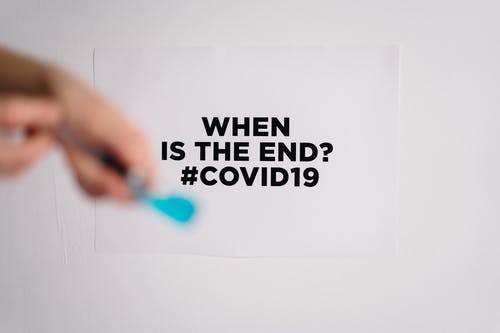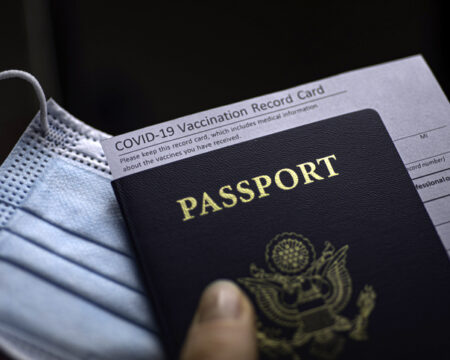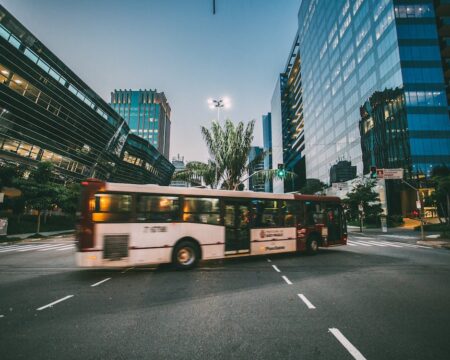

Is this the end of COVID-19?

My last commentary on COVID generated more responses than ever before, equally weighted between those that wanted to ‘discuss’ my assertion that someone could have a rational reason for not being vaccinated and those that were ‘COVID-19 vaccine hesitant’ and were happy that I was giving their side of the story a voice.
What was interesting to me was the fact that even among my readers – reaction was as polarized as it is in society at large. There does not seem to be many in my camp of choosing to be vaccinated for my personal health and possibly for the health of others around me while at the same time thinking everyone should have the right to make their own health choices about COVID-19 vaccines without being vilified by others around them.
I don’t want to debate vaccines. I don’t get why someone over age 50 isn’t getting vaccinated unless there is a specific medical reason. I do get why young people have worries about the side effects of vaccines and question the benefits. I am not here to tell anyone what to choose in respect of their own health care – these are just my thoughts.
The New Wave
As we start 2022, we find that the new strain of COVID-19, Omicron, is wreaking havoc on Canadians and I wanted to take stock of where we are and see if we can’t all see some way out of this mess together.
My understanding is that this Omicron variant will transmit quickly to greater numbers than ever before and our traditional masking and distancing measures will fail. The good news is that early reports are that the severity of the variant is lesser than past waves and we may still avoid the catastrophic deaths that were predicted back in March 2020. It will be harder than ever to collect comparable data to past waves since our testing has broken down under the much higher volume of positive cases.
COVID blew through our house two weeks ago. Three individuals got the virus and two individuals who were conveniently ‘boosted’ in December miraculously dodged the illness notwithstanding the shared airspace. For the less lucky who were infected, the symptoms ranged from being a little tired all the way to the worst flu ever. Everyone survived and we are all back to normal (pandemic normal) which is the standard of success for an encounter with COVID.
Governments Respond
In Ontario, we are back working from home if we can. I can barely stand the tiny box I am being asked to live in and I am amazed that the two-week lockdown from the start of the pandemic is back yet again almost two years along. I understand why people want to protest lockdowns – but I don’t entirely get wanting to get together in large groups to protest.
I also have empathy for the politicians that must make these no-win choices. Let people gather for Christmas and be blamed for not locking down sooner. Delay school for a week and parents complain everyone’s mental health would be better served if the kids were in class. Schedule school for January 17th and teachers complain it is too soon and too risky.
Back to Basics
I won’t be running for the Office of the Premier. I wouldn’t want that job even in a pandemic-free era. But let me say out loud what I think we need to be doing.
First, let’s admit that there are compromises to be made and let’s try to make the best ones we can. There is no way to lock everyone in a separate room with a separate ventilation system for the foreseeable future and I am not sure that we would even want to try. We are going to have to find a middle ground between keeping people safe and letting people live their lives.
Second, the young people thus far are not the ones loading up the hospitals and are not the ones dying in great numbers. We should continue to research vaccines for younger and younger citizens but in the meantime, we should let them go back to their lives. Most importantly let them go back to school. Most of my life has included the expression ‘you can’t bubble wrap your children’. When did we forget that truth?
Third, isolation should become a personal choice and not a mandate made by others. If you consider yourself vulnerable to this virus you can isolate, you can get vaccinated, and you can do both. But let’s not close businesses that can be staffed and patronized by resilient members of society.
Fourth, we need to decide when we should allow people to get together and when we should ask them to stay apart, all with the long-term strategy of learning to live with the virus. Limiting a family gathering to 5 or 10 people indoors while we can still crowd into the grocery store for food is performance art. Worse, many are just not buying into the ‘guidance’ and so some of us are at home in a small group and others are hosting parties at Halloween and Christmas. I realize that people need to buy food, but the government took way too long to realize 30,000 hockey fans in an arena is a complete contradiction to the 10-person limit at my house. Pick a number for almost all settings and dial it up and down as the hospital capacity moves up and down as well.
Fifth, we need a better mask policy. We wear masks, but I have long suspected that a less than perfectly fit cloth mask has much less value than the appearance they create. Here is an interesting article about masks. As it becomes clearer that asymptomatic people can transmit the virus, using better masks in higher risk settings should be the norm. There is a problem with counterfeit masks which could be solved by having government control procurement and arranging distribution through our pharmacy and grocery systems.
Finally, we need to separate out hospital buildings between ICUs and routine services. Postponing hip replacements or cancer screenings because of a viral outbreak is a tragedy. We need to find a way to continue with the medical care for which we have planned and promised to citizens.
The End is Near
I really believe that the end of the pandemic is near. I hope in a month or so Omicron will have come and gone, hospitalizations will be down, and we will mostly, if not entirely, be ‘unlocked’. When we get to my utopia there will be time to look back on what worked and what didn’t and what we will want to do next time – because the epidemiologists seem to be promising that there will be a next time.
Preparing for a pandemic has striking similarities to preparing for retirement. Everyone knows they should be taking action today to prepare for the future, but most people find it hard to put a high enough value on their future to make big sacrifices today. Collectively we have to decide if we are happy with hospital capacity that helps us just get by in ‘normal’ times and is woefully short of our needs in a pandemic or if we want to pre-pay for capacity that might not be needed for decades.
A crisis of the proportions of COVID-19 has no play book and it is hard to be fully prepared. Hopefully we can come away with this mess with a better understanding of what we want to see from each other and from our governments the next time around so that we can get a greater majority on the same page.



Comments